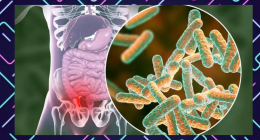Researchers Uncover Links Between Food Allergy Development and Other Factors.
A new study published in November 2023 issue of the Annals of Allergy, Asthma & Immunology suggests that diet, genetics, and infection may play a role in the development of food allergies in both children and adults.
The study surveyed over 40,000 adults and children with documented food allergies and asked them what factors they observed before developing reactions to food. Researchers found that nearly 19% of adult participants felt their food allergy resulted from eating too much of the allergenic food, while 16% thought their food allergies were related to genetics and family history. Another 12% noticed food allergies after antibiotic use.
Among young people, about 25% of parents and caregivers linked the child’s food allergy development to a viral infection.
The study’s authors say that these findings warrant further research, but they suggest that infections, changes in the environment, and hormonal changes may all play a role in the development of food allergies.
The American College of Allergy, Asthma, and Immunology (ACAAI) recommends that parents introduce certain allergenic foods early in life to help prevent food allergies. The ACAAI also says that understanding potential triggers for food allergy development is critical for new-onset adult allergies.
What foods are most likely to cause an allergic reaction?
According to the Food Allergy Research & Education (FARE), over 170 different types of food can cause allergic reactions. Of those, egg, milk, peanut, tree nuts, wheat, soy, fish, shellfish, and sesame are responsible for most of the severe food allergy reactions in the U.S.
FARE also says that food allergies are on the rise, with the prevalence of the condition among American children increasing by 50% since 1997.
Symptoms of allergy
Symptoms of allergy can vary depending on the type of allergy and the severity of the reaction. Some common symptoms of allergy include:
- Skin: Itching, hives, rash, eczema, swelling
- Respiratory: Sneezing, runny or stuffy nose, wheezing, coughing, shortness of breath
- Digestive: Nausea, vomiting, diarrhea, stomach cramps, abdominal pain
- Eyes: Watery, red, or itchy eyes, swelling around the eyes
In severe cases, an allergic reaction can lead to anaphylaxis, which is a life-threatening condition. Symptoms of anaphylaxis include:
- Swelling of the throat, tongue, and lips
- Difficulty breathing
- Hoarse voice
- Wheezing
- Dizziness or fainting
- Rapid heart rate
- Drop in blood pressure
If you experience any of these symptoms, it is important to seek medical attention immediately.
Here are some specific examples of how allergy symptoms can manifest differently depending on the type of allergy:
- Food allergy: Symptoms of food allergy can occur immediately after eating the allergenic food, or they may be delayed by several hours. Common symptoms of food allergy include itching, hives, rash, eczema, swelling, nausea, vomiting, diarrhea, stomach cramps, abdominal pain, and anaphylaxis.
- Hay fever (allergic rhinitis): Symptoms of hay fever typically occur when the person is exposed to pollen, dust mites, or other allergens in the air. Common symptoms of hay fever include sneezing, runny or stuffy nose, wheezing, coughing, and itchy, watery eyes.
- Asthma: Asthma is a chronic inflammatory condition of the airways that can be triggered by allergies. Symptoms of asthma include wheezing, coughing, shortness of breath, and chest tightness.
- Eczema: Eczema is a chronic skin condition that can be caused by allergies, but it can also be triggered by other factors, such as dry skin, irritants, and stress. Symptoms of eczema include dry, itchy skin, rash, blisters, and cracked or thickened skin.









